1 of 9
Download to read offline
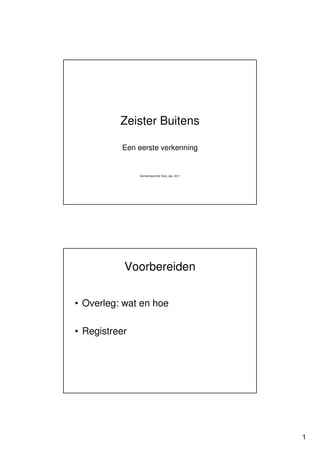
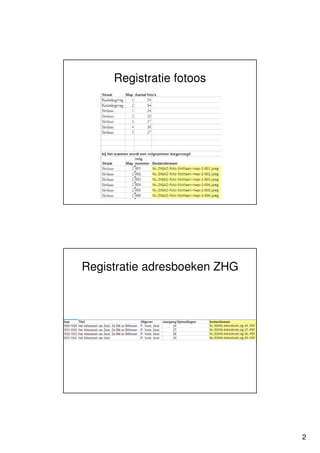
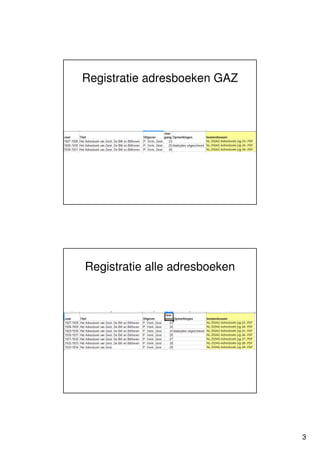

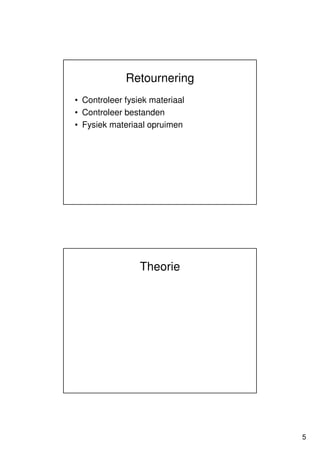
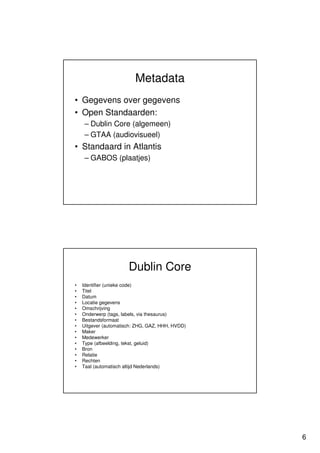
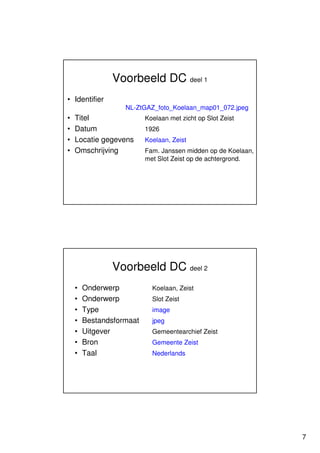

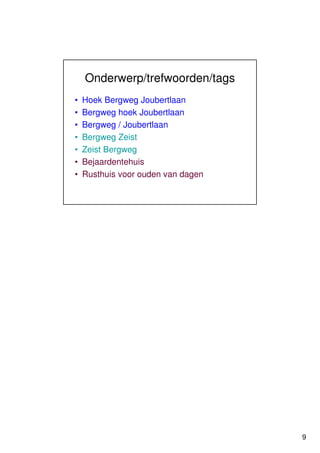
Ad
Recommended
Plan e4Zopacrisa
Ěý
El documento describe el primer momento del proceso de construcción del Plan de Evangelización para la Arquidiócesis de Bogotá, llamado Convocación. Este momento busca informar y motivar a los miembros de la Iglesia para que participen en la elaboración del plan, ya sea a través de la oración o integrando comisiones. Se han realizado reuniones con diferentes grupos como parroquias, comunidades religiosas y laicos para explicar la iniciativa y conseguir su participación en las próximas etapas.Geothermal power - cheaper than coal
Geothermal power - cheaper than coalmgankema
Ěý
The document outlines the potential of ultra deep geothermal power as a renewable energy source that can be cheaper than coal, as verified by industry experts. It highlights the advantages of geothermal energy, including financial attractiveness, independence from fluctuating wind and solar conditions, and absence of storage requirements. A consortium is being formed to further develop this project, with a projected investment cost per megawatt estimated at 2.1 to 2.6 million euros in certain geological locations.GRC Annual Meeting & GEA GEOEXPO+ - Flyer
GRC Annual Meeting & GEA GEOEXPO+ - FlyerGeothermal Resources Council
Ěý
The latest information on the geothermal energy event of the yearShows of geothermal and hydrogeological factors in oil and gas deposits
Shows of geothermal and hydrogeological factors in oil and gas depositsDr. Arzu Javadova
Ěý
I. Regions with thick clay deposits that accumulated organic matter are favorable for oil and gas formation as they provide stable conditions for generation.
II. Between 65-120°C and 100-200 atm, the main phase of oil formation occurs as hydrocarbons are generated.
III. As generation continues, hydrocarbons migrate laterally through porous reservoirs towards areas of accumulation, aided by heated formation waters.Sense of urgency - Climate and Energy issues
Sense of urgency - Climate and Energy issuesmgankema
Ěý
The document discusses the urgent climate and energy issues highlighted by oil and gas companies, emphasizing that worldwide energy demand is expected to double by 2050 while conventional oil and gas supply will not meet this demand. It presents three key truths: increasing energy consumption will lead to higher CO2 emissions, declining oil production is evident in non-OPEC countries, and scientific consensus exists on global warming linked to CO2. The information is supported by graphs and data related to oil production and climate change.Project on Geothermal Drilling
Project on Geothermal Drilling Thanos Paraschos
Ěý
The document discusses the principles and technologies behind geothermal drilling, focusing on the drilling rigs, costs, limitations, and future advancements in the field. Geothermal energy extraction involves creating boreholes to access the earth's heat for direct use or electricity generation, with significant potential in places like the Pacific Rim. The document also highlights the economic feasibility, environmental impacts, and the need for innovative drilling techniques to tap deeper geothermal resources.Hawaii geothermal presentation august 2012 rev2
Hawaii geothermal presentation august 2012 rev2JonLorentz
Ěý
The document summarizes geothermal development challenges and opportunities in New Zealand and Indonesia. It discusses how geothermal energy is an established renewable resource with lower generation costs than other renewables. However, geothermal projects face significant risks related to resources, permitting, financing, and country/political factors. The document then provides more details on the geothermal markets and recent projects in New Zealand and Indonesia.Global Geothermal Development, CanGEA Conference, March 2013
Global Geothermal Development, CanGEA Conference, March 2013ThinkGeoEnergy
Ěý
The document summarizes the current status of global geothermal development. It shows that Asia has the largest installed geothermal capacity at 4,568 MW, followed by North America at 4,344 MW. The development pipeline is largest in the United States, Indonesia, and the Philippines. Financing remains a challenge, with development banks playing a key role. The document also outlines opportunities for Canadian companies to participate in geothermal supply chain areas like drilling, engineering, manufacturing, and services.Geothermal Presentation, March 14, 2013, Madrid/ Spain
Geothermal Presentation, March 14, 2013, Madrid/ SpainThinkGeoEnergy
Ěý
This document provides information about geothermal energy as a sustainable source of electricity production. It discusses Green Energy Group, a company that develops modular geothermal wellhead power plants. It details Green Energy Group's first major contract in Kenya and the development of their 6.4 MW pilot plant. The document also outlines geothermal energy technologies, utilization applications, resources at different depths, and the development process for geothermal power plants.PCDA Geothermal Presentation
PCDA Geothermal PresentationShawneeEDF
Ěý
The document discusses geothermal energy, emphasizing its effectiveness as a renewable energy source accessed through geothermal heat pumps that can significantly reduce electricity costs and CO2 emissions. It details technological improvements, incentives for residential and business installations, and the environmental benefits of using such systems. The document encourages residents of Ponca City to consider geothermal solutions for heating and cooling, highlighting available financial incentives and long-term savings.Kazkhstan offshore well correlation
Kazkhstan offshore well correlationDr. Arzu Javadova
Ěý
Given Kazkahstan offshore well log correlationGeothermal Philippines
Geothermal Philippinesbgrocks
Ěý
Geothermal energy is a renewable resource that harnesses heat from within the Earth to generate electricity. Many countries around the world currently utilize geothermal energy, including the Philippines where control rooms monitor geothermal power plants. With continued technological advancements, geothermal energy has significant potential to expand worldwide as a sustainable alternative to fossil fuels.GEOTHERMAL ENERGY
GEOTHERMAL ENERGYDarryl Dmello
Ěý
Geothermal energy harnesses heat from within the earth and can be used directly or to generate electricity. It has significant potential but is location-dependent. Direct uses include heating buildings and greenhouses or providing heat for industrial processes from hot springs or underground reservoirs. Electricity is typically generated via dry steam, flash steam, or binary cycle power plants. While initial costs are high, electricity generation becomes competitive over time and provides stable prices. Geothermal energy has environmental benefits but also risks like induced seismic activity. India has geothermal provinces that could generate over 10,000 MW but development has just begun with pilot projects planned.GRC 2016 Registry of Geothermal Services and Equipment
GRC 2016 Registry of Geothermal Services and EquipmentGeothermal Resources Council
Ěý
The document provides information about the 40th annual GRC Meeting and GEA Geothermal Energy Expo taking place October 23-26, 2016 in Sacramento, CA. It lists event details like deadlines, workshops, field trips, technical sessions, and a charity golf tournament. It also advertises various geothermal industry companies and services. The event will bring together geothermal researchers and professionals from around the world to share the latest developments in geothermal energy.Geothermal In The U S
Geothermal In The U Sbgrocks
Ěý
The document discusses geothermal energy in the United States. It specifically mentions The Geysers geothermal power plant #18 and issues with microseismic earthquakes it has caused, including triggering a landslide in the nearby community of Anderson Springs.Geothermal Discussion: Office of Energy Security
Geothermal Discussion: Office of Energy SecurityUniversity of Minnesota
Ěý
The document discusses geothermal energy and ground source heat pumps (GSHP). It notes that a Minnesota report evaluated the emissions and economics of GSHP systems compared to conventional natural gas and air conditioning systems. While GSHP systems have lower operating costs, their high upfront costs associated with the well field make them challenging to compare to natural gas systems. The document also discusses how the viability of GSHP systems depends on building energy load and efficiency, as well as considerations like utility rates, tax credits, and quality installation.Geothermal Reseources in Canadian Cordillera
Geothermal Reseources in Canadian CordilleraYulini Arediningsih, M.Sc. P.Geo
Ěý
The document summarizes the potential for geothermal energy resources in the Canadian Cordillera. It notes that the region sits along the Circum Pacific Ring of Fire and is rich in thermal manifestations, but Canada has not utilized geothermal resources for power. It describes the key elements of geothermal systems and the types that could occur in the Cordillera based on temperature and geology. These include volcanic, hydrothermal, sedimentary, and hot dry rock systems. Favorable conditions for geothermal energy exist due to high heat flow throughout the region from tectonic activity, volcanism, and major faults that provide pathways for heat and fluid flow.Geothermal Energy Basics
Geothermal Energy BasicsJake Binder
Ěý
Geothermal energy harnesses heat from below Earth's surface. There are three types of geothermal fields - hot water, wet steam, and dry steam - determined by water temperature, which dictates the type of power plant built. Power plants drill wells to access geothermal reservoirs, pumping water to the surface where steam spins turbines to generate electricity before being reinjected underground. While the heat source is infinite, individual aquifers are non-renewable without techniques like hydrofracking to increase permeability. Geothermal energy has economic and environmental benefits but also costs of drilling and potential emissions.Geothermal Technology
Geothermal Technologybgrocks
Ěý
Geothermal technology involves drilling wells to access heat from underground and using it to generate electricity. Wells are drilled and tested by flowing them, then a wellhead with valves and controls is built on top to access the underground heat. The heat is used to power turbine generators to produce electricity.Geothermal Energy Potential - Montana
Geothermal Energy Potential - MontanaGeothermal Resources Council
Ěý
The document outlines the geothermal energy potential in Montana, highlighting its clean, sustainable, and reliable power generation capabilities without the carbon emissions associated with fossil fuels. It discusses the benefits of geothermal energy, including job creation, economic boosts, and potential reductions in carbon emissions, while also identifying key geothermal resource areas and direct-use applications throughout the state. The document emphasizes the long-term economic advantages and reduced heating costs associated with geothermal technologies, including heat pumps.Geothermal power - financial comparison
Geothermal power - financial comparisonmgankema
Ěý
The document compares geothermal power's financial viability against wind, solar, and coal power, highlighting that geothermal technology effectively converts thermal energy from deep earth into electricity. Geothermal power presents advantages, such as higher capacity utilization and lower emissions, making it an attractive investment despite initial cost comparisons per MW-peak. Future coal prices and the longevity of geothermal plants further enhance its economic competitiveness over time.Geothermal Energy Potential - New Mexico
Geothermal Energy Potential - New MexicoGeothermal Resources Council
Ěý
The document highlights the geothermal energy potential in New Mexico, emphasizing its sustainability, reliability, and economic benefits. It outlines that geothermal resources can substantially reduce carbon emissions, provide stable jobs, and stimulate the local economy with near-zero emissions compared to fossil fuels. Direct-use and heat pump applications further support local energy needs, offering significant cost savings and environmental benefits.Renewable Energy Act of 2008: Hits and Misses for the Philippine Geothermal I...
Renewable Energy Act of 2008: Hits and Misses for the Philippine Geothermal I...Fernando Penarroyo
Ěý
The document discusses legal and regulatory issues affecting the Philippine geothermal industry under the Renewable Energy Act of 2008. It identifies several key challenges, including the government's ambivalence towards foreign ownership, complex rules for obtaining consent from indigenous peoples, lack of transmission infrastructure, and delays in establishing clear feed-in tariff rates. It recommends that regulators address these issues to provide greater policy certainty and incentives to attract more private investment needed to meet the country's renewable energy targets.More Related Content
Viewers also liked (16)
Global Geothermal Development, CanGEA Conference, March 2013
Global Geothermal Development, CanGEA Conference, March 2013ThinkGeoEnergy
Ěý
The document summarizes the current status of global geothermal development. It shows that Asia has the largest installed geothermal capacity at 4,568 MW, followed by North America at 4,344 MW. The development pipeline is largest in the United States, Indonesia, and the Philippines. Financing remains a challenge, with development banks playing a key role. The document also outlines opportunities for Canadian companies to participate in geothermal supply chain areas like drilling, engineering, manufacturing, and services.Geothermal Presentation, March 14, 2013, Madrid/ Spain
Geothermal Presentation, March 14, 2013, Madrid/ SpainThinkGeoEnergy
Ěý
This document provides information about geothermal energy as a sustainable source of electricity production. It discusses Green Energy Group, a company that develops modular geothermal wellhead power plants. It details Green Energy Group's first major contract in Kenya and the development of their 6.4 MW pilot plant. The document also outlines geothermal energy technologies, utilization applications, resources at different depths, and the development process for geothermal power plants.PCDA Geothermal Presentation
PCDA Geothermal PresentationShawneeEDF
Ěý
The document discusses geothermal energy, emphasizing its effectiveness as a renewable energy source accessed through geothermal heat pumps that can significantly reduce electricity costs and CO2 emissions. It details technological improvements, incentives for residential and business installations, and the environmental benefits of using such systems. The document encourages residents of Ponca City to consider geothermal solutions for heating and cooling, highlighting available financial incentives and long-term savings.Kazkhstan offshore well correlation
Kazkhstan offshore well correlationDr. Arzu Javadova
Ěý
Given Kazkahstan offshore well log correlationGeothermal Philippines
Geothermal Philippinesbgrocks
Ěý
Geothermal energy is a renewable resource that harnesses heat from within the Earth to generate electricity. Many countries around the world currently utilize geothermal energy, including the Philippines where control rooms monitor geothermal power plants. With continued technological advancements, geothermal energy has significant potential to expand worldwide as a sustainable alternative to fossil fuels.GEOTHERMAL ENERGY
GEOTHERMAL ENERGYDarryl Dmello
Ěý
Geothermal energy harnesses heat from within the earth and can be used directly or to generate electricity. It has significant potential but is location-dependent. Direct uses include heating buildings and greenhouses or providing heat for industrial processes from hot springs or underground reservoirs. Electricity is typically generated via dry steam, flash steam, or binary cycle power plants. While initial costs are high, electricity generation becomes competitive over time and provides stable prices. Geothermal energy has environmental benefits but also risks like induced seismic activity. India has geothermal provinces that could generate over 10,000 MW but development has just begun with pilot projects planned.GRC 2016 Registry of Geothermal Services and Equipment
GRC 2016 Registry of Geothermal Services and EquipmentGeothermal Resources Council
Ěý
The document provides information about the 40th annual GRC Meeting and GEA Geothermal Energy Expo taking place October 23-26, 2016 in Sacramento, CA. It lists event details like deadlines, workshops, field trips, technical sessions, and a charity golf tournament. It also advertises various geothermal industry companies and services. The event will bring together geothermal researchers and professionals from around the world to share the latest developments in geothermal energy.Geothermal In The U S
Geothermal In The U Sbgrocks
Ěý
The document discusses geothermal energy in the United States. It specifically mentions The Geysers geothermal power plant #18 and issues with microseismic earthquakes it has caused, including triggering a landslide in the nearby community of Anderson Springs.Geothermal Discussion: Office of Energy Security
Geothermal Discussion: Office of Energy SecurityUniversity of Minnesota
Ěý
The document discusses geothermal energy and ground source heat pumps (GSHP). It notes that a Minnesota report evaluated the emissions and economics of GSHP systems compared to conventional natural gas and air conditioning systems. While GSHP systems have lower operating costs, their high upfront costs associated with the well field make them challenging to compare to natural gas systems. The document also discusses how the viability of GSHP systems depends on building energy load and efficiency, as well as considerations like utility rates, tax credits, and quality installation.Geothermal Reseources in Canadian Cordillera
Geothermal Reseources in Canadian CordilleraYulini Arediningsih, M.Sc. P.Geo
Ěý
The document summarizes the potential for geothermal energy resources in the Canadian Cordillera. It notes that the region sits along the Circum Pacific Ring of Fire and is rich in thermal manifestations, but Canada has not utilized geothermal resources for power. It describes the key elements of geothermal systems and the types that could occur in the Cordillera based on temperature and geology. These include volcanic, hydrothermal, sedimentary, and hot dry rock systems. Favorable conditions for geothermal energy exist due to high heat flow throughout the region from tectonic activity, volcanism, and major faults that provide pathways for heat and fluid flow.Geothermal Energy Basics
Geothermal Energy BasicsJake Binder
Ěý
Geothermal energy harnesses heat from below Earth's surface. There are three types of geothermal fields - hot water, wet steam, and dry steam - determined by water temperature, which dictates the type of power plant built. Power plants drill wells to access geothermal reservoirs, pumping water to the surface where steam spins turbines to generate electricity before being reinjected underground. While the heat source is infinite, individual aquifers are non-renewable without techniques like hydrofracking to increase permeability. Geothermal energy has economic and environmental benefits but also costs of drilling and potential emissions.Geothermal Technology
Geothermal Technologybgrocks
Ěý
Geothermal technology involves drilling wells to access heat from underground and using it to generate electricity. Wells are drilled and tested by flowing them, then a wellhead with valves and controls is built on top to access the underground heat. The heat is used to power turbine generators to produce electricity.Geothermal Energy Potential - Montana
Geothermal Energy Potential - MontanaGeothermal Resources Council
Ěý
The document outlines the geothermal energy potential in Montana, highlighting its clean, sustainable, and reliable power generation capabilities without the carbon emissions associated with fossil fuels. It discusses the benefits of geothermal energy, including job creation, economic boosts, and potential reductions in carbon emissions, while also identifying key geothermal resource areas and direct-use applications throughout the state. The document emphasizes the long-term economic advantages and reduced heating costs associated with geothermal technologies, including heat pumps.Geothermal power - financial comparison
Geothermal power - financial comparisonmgankema
Ěý
The document compares geothermal power's financial viability against wind, solar, and coal power, highlighting that geothermal technology effectively converts thermal energy from deep earth into electricity. Geothermal power presents advantages, such as higher capacity utilization and lower emissions, making it an attractive investment despite initial cost comparisons per MW-peak. Future coal prices and the longevity of geothermal plants further enhance its economic competitiveness over time.Geothermal Energy Potential - New Mexico
Geothermal Energy Potential - New MexicoGeothermal Resources Council
Ěý
The document highlights the geothermal energy potential in New Mexico, emphasizing its sustainability, reliability, and economic benefits. It outlines that geothermal resources can substantially reduce carbon emissions, provide stable jobs, and stimulate the local economy with near-zero emissions compared to fossil fuels. Direct-use and heat pump applications further support local energy needs, offering significant cost savings and environmental benefits.Renewable Energy Act of 2008: Hits and Misses for the Philippine Geothermal I...
Renewable Energy Act of 2008: Hits and Misses for the Philippine Geothermal I...Fernando Penarroyo
Ěý
The document discusses legal and regulatory issues affecting the Philippine geothermal industry under the Renewable Energy Act of 2008. It identifies several key challenges, including the government's ambivalence towards foreign ownership, complex rules for obtaining consent from indigenous peoples, lack of transmission infrastructure, and delays in establishing clear feed-in tariff rates. It recommends that regulators address these issues to provide greater policy certainty and incentives to attract more private investment needed to meet the country's renewable energy targets.Renewable Energy Act of 2008: Hits and Misses for the Philippine Geothermal I...
Renewable Energy Act of 2008: Hits and Misses for the Philippine Geothermal I...Fernando Penarroyo
Ěý
Presentatie Digi Atelier 28.0911 Zeist-H.Mugie
- 1. Zeister Buitens Een eerste verkenning Gemeentearchief Zeist, sep. 2011 Voorbereiden • Overleg: wat en hoe • Registreer 1
- 3. Registratie adresboeken GAZ Registratie alle adresboeken 3
- 4. Registratie bouwtekeningen Inpakken en aanleveren • Overleg • Logische eenheden bij elkaar houden • Inpakken • Verzekeren: digitaliseerder • Ophaalafspraak maken 4
- 5. Retournering • Controleer fysiek materiaal • Controleer bestanden • Fysiek materiaal opruimen Theorie 5
- 6. Metadata • Gegevens over gegevens • Open Standaarden: – Dublin Core (algemeen) – GTAA (audiovisueel) • Standaard in Atlantis – GABOS (plaatjes) Dublin Core • Identifier (unieke code) • Titel • Datum • Locatie gegevens • Omschrijving • Onderwerp (tags, labels, via thesaurus) • Bestandsformaat • Uitgever (automatisch: ZHG, GAZ, HHH, HVDD) • Maker • Medewerker • Type (afbeelding, tekst, geluid) • Bron • Relatie • Rechten • Taal (automatisch altijd Nederlands) 6
- 7. Voorbeeld DC deel 1 • Identifier NL-ZtGAZ_foto_Koelaan_map01_072.jpeg • Titel Koelaan met zicht op Slot Zeist • Datum 1926 • Locatie gegevens Koelaan, Zeist • Omschrijving Fam. Janssen midden op de Koelaan, met Slot Zeist op de achtergrond. Voorbeeld DC deel 2 • Onderwerp Koelaan, Zeist • Onderwerp Slot Zeist • Type image • Bestandsformaat jpeg • Uitgever Gemeentearchief Zeist • Bron Gemeente Zeist • Taal Nederlands 7
- 8. Consistente datums • 2 sep. 2011 • 2-9-11 • 2011-09-02 • 2 september 2011 • 9/2/11 Consistente naamgeving • Hade Mugie • Mugie, H.F. • C. van der Heide • Heide, Kees van der 8
- 9. Onderwerp/trefwoorden/tags • Hoek Bergweg Joubertlaan • Bergweg hoek Joubertlaan • Bergweg / Joubertlaan • Bergweg Zeist • Zeist Bergweg • Bejaardentehuis • Rusthuis voor ouden van dagen 9